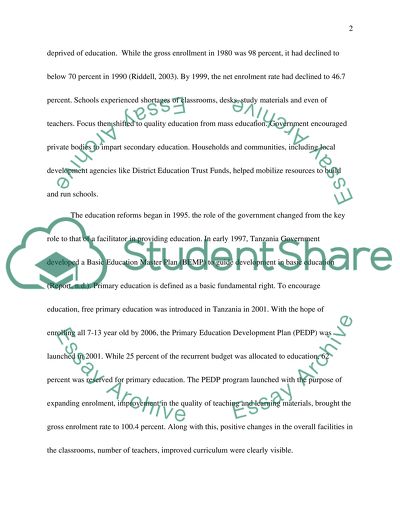Cite this document
(“The Historical Development of the Educational System of Tanzania And Essay”, n.d.)
The Historical Development of the Educational System of Tanzania And Essay. Retrieved from https://studentshare.org/education/1536514-the-historical-development-of-the-educational-system-of-tanzania-and-how-it-works-today
The Historical Development of the Educational System of Tanzania And Essay. Retrieved from https://studentshare.org/education/1536514-the-historical-development-of-the-educational-system-of-tanzania-and-how-it-works-today
(The Historical Development of the Educational System of Tanzania And Essay)
The Historical Development of the Educational System of Tanzania And Essay. https://studentshare.org/education/1536514-the-historical-development-of-the-educational-system-of-tanzania-and-how-it-works-today.
The Historical Development of the Educational System of Tanzania And Essay. https://studentshare.org/education/1536514-the-historical-development-of-the-educational-system-of-tanzania-and-how-it-works-today.
“The Historical Development of the Educational System of Tanzania And Essay”, n.d. https://studentshare.org/education/1536514-the-historical-development-of-the-educational-system-of-tanzania-and-how-it-works-today.


